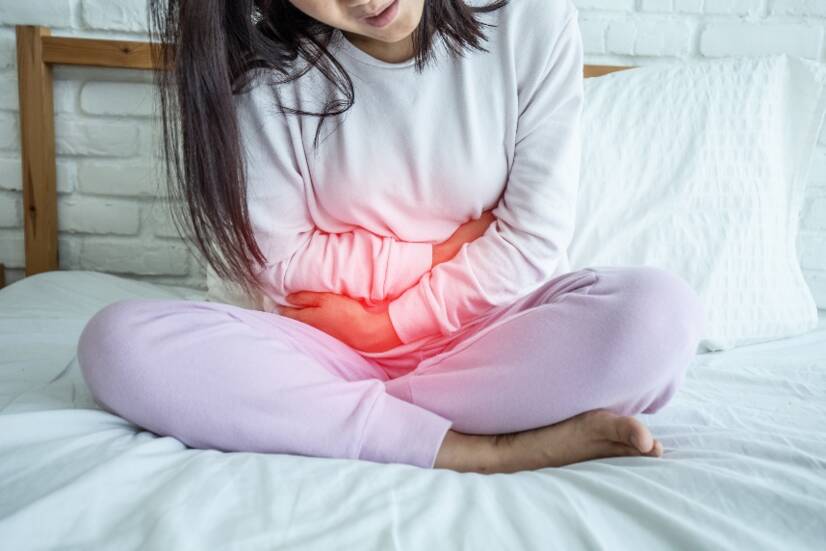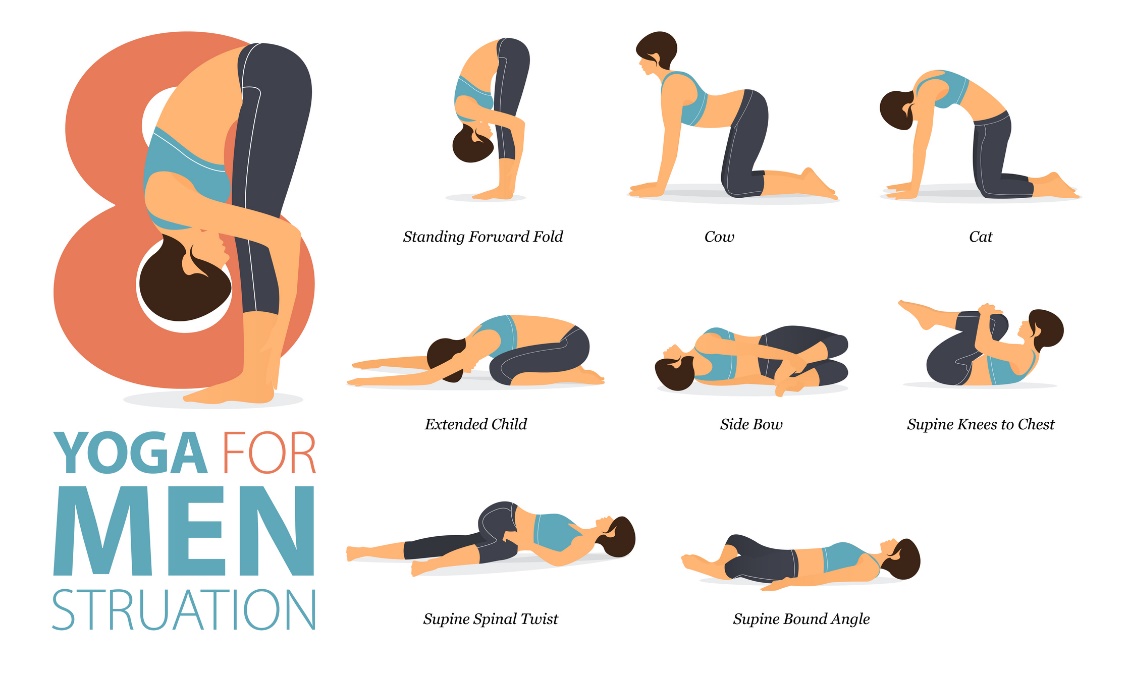- ROZTOČIL, Aleš and Pavel BARTOŠ. Modern Gynaecology. Prague: Grada, 2011. ISBN 978-80-247-2832-2
- ROB, Lukáš, Alois MARTAN and Pavel VENTRUBA. Gynecology. Third, supplemented and revised edition. Prague: Galén, [2019]. ISBN 978-80-7492-426-2
- healthline.com - What Causes Painful Menstrual Periods and How Do I Treat Them?
- medicalnewstoday.com - What to know about menstrual cramps. Medical News Today. Valinda Riggins Nwadike, MD, MPH
Pain in the lower abdomen during menstruation or menopause? What helps? + 5 tips

More than half of women experience pain and uncomfortable cramps during menstruation during their lifetime. It often occurs in young women, but can also make life uncomfortable for older women and women in menopause. What really helps against severe menstrual pain?
Article content
Painful menstruation is a relatively common phenomenon. Pain in the lower abdomen most often occurs before menstruation and in the first days of menstruation. Analgesics are a common choice for quick relief.
However, there are healthier tips and advice that can make menstruation easier. Painful menstruation, menopause, PMS, herbs, tips, advice and other interesting information can be read in the article.
Pain in the lower abdomen during menstruation
Mild pain in the lower abdomen is physiological in the first days of menstruation.
On the other hand, excessive pain and strong contractions of the uterine musculature should not occur in a healthy cycle.
Nevertheless, painful menstruation occurs in a large number of women.
Although analgesics provide quick relief from pain, they do not address the root cause of the problem. Their excessive consumption is also not advisable. Examples are ibuprofen or paracetamol.
The term PMS (premenstrual syndrome) includes a set of physical and psychological symptoms before and at the onset of menstruation. The aetiology of PMS is related to cyclical changes and a marked hormonal decline.
Physical symptoms include the aforementioned lower abdominal pain and cramps, bloating, indigestion, headache, migraine, fatigue, as well as increased breast tenderness and tightness.
Mental symptoms include moodiness, irritability, anxiety, melancholy, sadness and reduced ability to concentrate.
Read also:
Premenstrual syndrome.
Excessively painful menstruation is professionally called dysmenorrhea. It is a gynecological diagnosis whose main manifestation is severe pain in the lower abdomen during the menstrual phase of the cycle.
Dysmenorrhea can have an organic cause - hormonal imbalance, PCOS, endometriosis, fibroid, cyst and others.
Conversely, dysmenorrhea may also have an unclear functional cause - inappropriate lifestyle and diet, pelvic muscle imbalance, pelvic floor spasm, psychogenic factor, excessive prostaglandin production, and others.
In women with dysmenorrhea, there is an overproduction of prostaglandins, which leads to abnormal uterine activity and, as a result, pain.
Possible physical symptoms during menstruation:
- Pain and cramps in the lower abdomen
- Pain in the lumbar spine/pelvis area
- Tender, enlarged breasts
- Headache and migraine
- Nausea and feeling like vomiting
- Deteriorated skin condition
- Digestive and intestinal problems
- Increased/altered appetite
- Mood changes, feeling sad, irritability
Lower abdominal pain in menopause
Menopause occurs as a result of hormonal changes, a decrease in both progesterone and estrogen production and follicular depletion in the ovaries.
However, a woman's menstrual cycle does not stop overnight. Individual menstrual cycles may be irregular, with a different course of symptoms, pain and bleeding.
The last menstrual bleeding is called menopause. In layman's terms, however, menopause is synonymous with the period of change in a woman's body associated with just the cessation of menstruation.
Menopause is the period between the 45th and 60th year of a woman's life, beginning approximately one year before menopause. It is characterized by adverse symptoms that affect approximately 70 to 80% of women.
According to experts, menstruating women may also experience pain and cramps in the lower abdomen during the 'transition' period. Breast tenderness and headaches are also affected.
Related possible symptoms of menopause:
- Hot flashes
- Increased sweating
- Irregular menstrual periods
- Change in bleeding intensity
- Excessive fatigue
- Decreased quality of hair and nails
- Disturbances in sleep quality
- Feelings of sadness and anxiety
- Change in body weight
Help with female pain and cramps
In the first place, a visit to a gynaecologist is necessary to rule out an organic cause of painful menstruation.
Diagnosis consists primarily of a per vaginal examination by palpation, ultrasound examination, cervical smear and blood sampling. The actual treatment and any lifestyle modification depends on the cause of the problem.
Below are 5 effective tips to help ease the course of menstruation and PMS. They do not include analgesics (painkillers) or hormonal contraceptives.
1. Local application of heat
With the onset of menstruation, there is a contraction of the uterine muscles and an increase in muscle tension in the pelvis, pelvic floor, lower back and abdominal wall.
Local application of heat improves circulation, dilates blood vessels, promotes blood and lymph flow and relaxes muscle tone.
The effect of heat is muscle relaxation with analgesic effect.
The application of heat in the form of a thermophore, warm compress or warm shower is suitable. However, long baths during menstruation are not recommended by experts.
Caution, excessive or prolonged intake of heat can simultaneously increase the intensity of menstrual bleeding.
2. Relief positions and massage
Specific "feminine" exercises and positions can be used to relieve increased tension in the abdominal and back muscles.
Relationships between muscles and organs reflexively release muscle tension. During exercise, blood circulation to the small pelvic vessels increases and tone is relieved.
The aim of the relief postures and exercises is to:
- Relaxation of the abdominal wall
- Stretching the muscles of the lower back
- Automobilization of the lower spine and pelvis
- Activation of diaphragmatic (abdominal) breathing
- Relaxation of the pelvic floor
The postures in the picture should be performed in a slow, non-cradling motion and it is advisable to stay in them for a while. It is recommended to breathe deeply using diaphragmatic (abdominal) breathing.
Choose the ones that suit you and help relieve painful spasms.
Gentle peristaltic self-massage of the abdomen and lower abdomen is a good choice. Gentle, minimal pressure is used to create an imaginary circle in the direction of peristalsis (bowel movement). The massage should be pleasant above all and certainly not painful.
Self-massage helps to relieve digestive problems and relax a tightened abdominal wall. Beware of massaging with too much force and in the wrong direction - this can worsen the symptoms of PMS.

3. Natural herbal help
It is possible to reach for the natural help of specific herbs, which are popularly called "female herbs". They are beneficial for the menstrual cycle, regularity, pain and PMS. Last but not least, they support the proper function and activity of the female reproductive organs.
They can be consumed in the form of herbal tea, drops, tincture or extract in a dietary supplement.
Suitable types of female herbs:
- Contrylic (to support cycle harmonisation, menstrual comfort and uterine function)
- Yarrow (to support cycle regularity and length and to eliminate painful symptoms)
- Kokoschka paste capsule (to support relief of menstrual bleeding - short term use)
- Drumstick (to help eliminate menstrual cramps and pain)
- Black raspberry (control excessive bleeding and support menstrual comfort)
- White horehound (support genital and urinary tract health, elimination of painful symptoms)
- Lemon balm (promoting psychological well-being and calming the body and mind)
4. Adequate intake of vitamins and minerals
Before and during menstruation, it is important to increase the intake of the minerals magnesium, potassium and iron. magnesium is most important for eliminating pain and contractions of the uterine muscles.
Magnesium is a mineral that promotes muscle cramps and relieves high muscle tension. In addition to supplements, magnesium should be taken in the diet (broccoli, spinach, sunflower seeds, beans, dark chocolate, avocados...).
Before and during menstruation, it is advisable to increase the intake of vitamins B1, B6, D and E. It is also possible to take a dietary supplement. These vitamins support hormonal balance, immunity and overall menstrual comfort.
5. Lifestyle as prevention of healthy menstruation
A healthy menstrual cycle is manifested by the regularity and presence of ovulation and menstruation. Soreness and symptoms of PMS are mild.
Prevention of healthy pain-free menstruation is based primarily on lifestyle. This consists of plenty of appropriate physical activity, a regular nutritious diet, psychological well-being (elimination of stress) and good quality sleep (regeneration of the body).
As part of the diet, all food intolerances and allergies should be observed. The diet should be complete and contain all the necessary macronutrients (proteins, fats and complex carbohydrates and fibre).
It is generally recommended to reduce the intake of simple refined sugars in the diet.
Strongly pungent, spicy and hot foods, excessive intake of dairy products, caffeine and simple sugars are not recommended during menstruation.
Regular annual visits to the gynaecologist, including instrumental sonography/mammography of the breasts and cervical smears for laboratory diagnosis, are essential for healthy menstruation and prevention.
Prevention of healthy menstruation:
- Preventive visits to the gynaecologist
- Regular nutritious diet
- Adequate sleep and recovery
- Appropriate physical activity
- Elimination of stress factors
- Elimination of pelvic muscle imbalances
- Adequate intake of vitamins and minerals
- Cycle support using natural remedies
Interesting information also in the articles:
- How to relieve painful menstruation? What helps: medication, exercise, diet
- Breast self-examination: how to step by step to prevention and breast health?
- Breast Cancer Prevention.
- What is cervical cancer prevention? Risk factors and symptoms
- What is cervical conization and how does it work? Recovery and pregnancy
Interesting resources










